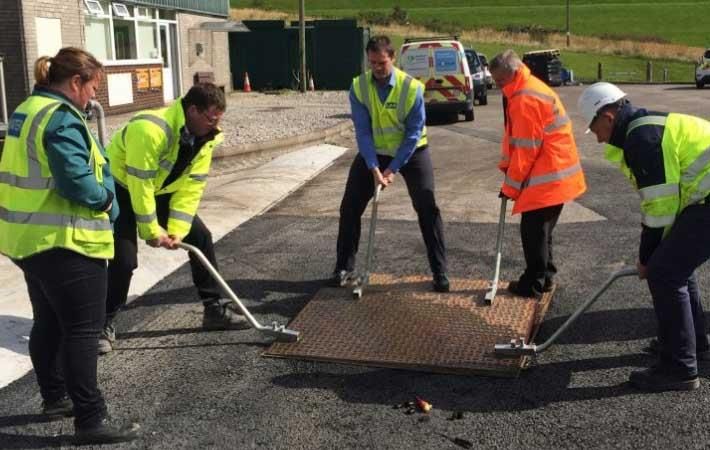Fibrelite has eliminated Access Cover manual handling risks by designing composite covers which weigh at approximately one-third of traditional alternatives with best strength to weight ratio in the industry. The company has made composite covers with load ratings over 40 tonnes, and this has been extended to 90 tonne load ratings for airports and ports.
Composites effectively shed weight whilst retaining mechanical properties. This means that a composite cover with the same load rating as a concrete or metal cover will weigh far less. “Our covers weighing in at approximately one-third of traditional alternatives, gives us the best strength to weight ratio in the industry. We are in fact the only company to successfully engineer and manufacture composite covers with load ratings over 40 tonnes (D400). In 2016, we extended our range all the way up to 90 tonne (F900) load ratings for airports and ports,” Fibrelite said.Fibrelite has eliminated Access Cover manual handling risks by designing composite covers which weigh at approximately one-third of traditional alternatives with best strength to weight ratio in the industry. The company has made composite covers with load ratings over 40 tonnes, and this has been extended to 90 tonne load ratings for airports and ports.#
David Holmes, Fibrelite’s technical director explained “one or two people can move any Fibrelite cover quickly and easily without risk of back injury or crushed fingers, at any load rating.”
Over the last two years, a staggering 4.5 million working days were lost to workplace injuries. A fifth of these were caused by manual handling. One common activity which contributes to this, posing a high-risk of manual handling injuries is the removal and replacement of heavy concrete and metal manhole and trench covers. Their position and weight makes them an ideal culprit for back and finger injuries which can be compounded if the covers corrode or crumble
Composite materials are revolutionising an ever-broadening array of industries including aerospace, infrastructure, construction and now health and safety. A number of companies are using composites to create products that eliminate manual handling issues in the access cover industry.
Whilst the lightweight and corrosion-free properties of composites go a long way towards decreasing manual handling injuries, the company aimed to eliminate them altogether. It identified stooping as an additional cause of injury. “To solve this, we created an ergonomically designed lifting handle, allowing users to safely remove and replace the covers keeping the load close to the waist, avoiding stooping or bending their backs. This allows users to adhere to the advised lifting technique from both the HSE and NHS,” the company said.
The company also considered the safety of people and vehicles passing over the covers. “Unlike metal and concrete covers that can become hazardous when wet or worn, our covers have been engineered to provide a safe walking and driving surface, tested to be equivalent to modern high-grade road surfaces,” it said.
According to Ian Thompson Fibrelite’s managing director, there has been “a dramatic growth in the number of industries reducing their health and safety risks by using composites, both at new build facilities where our covers are specified from the outset and at existing facilities modernising their previously installed covers”. (SV)
Fibre2Fashion News Desk – India


